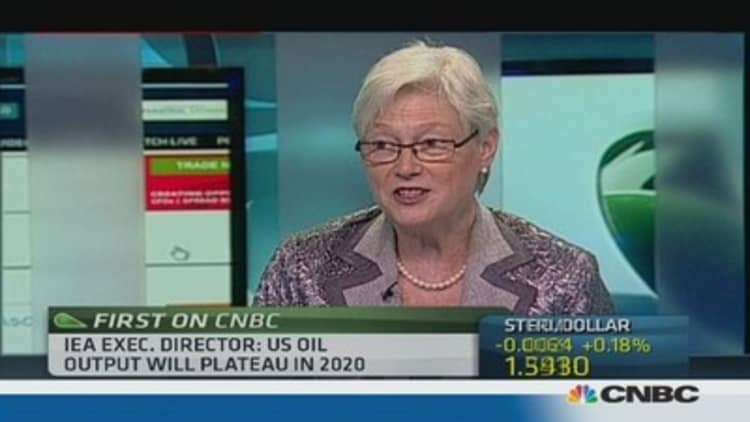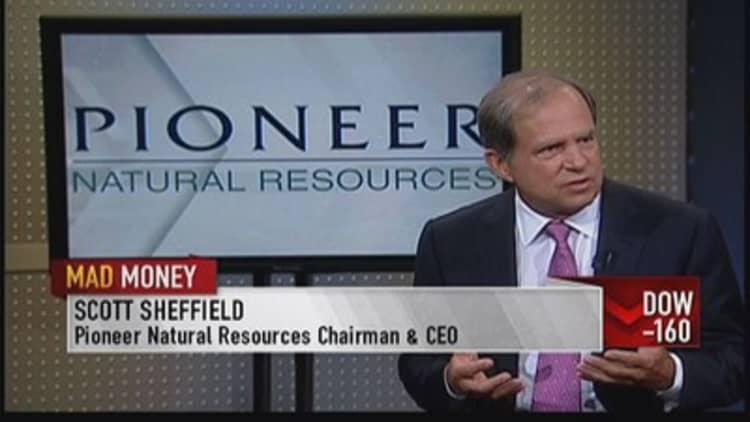The United States will stride past Saudi Arabia and Russia to become the world's top oil producer by 2016, the West's energy agency said, bringing Washington closer to energy self-sufficiency and reducing the need for OPEC supply.
But by 2020, the oilfields of Texas and North Dakota will be past their prime and the Middle East will regain its dominance—especially as a supplier to Asia, the International Energy Agency (IEA) said on Tuesday.
The IEA, which advises large industrialized nations on energy policy, predicted in its 2012 World Energy Outlook the United States would surpass Riyadh as top producer in 2017.
A report last month by leading U.S. energy consultancy PIRA said the U.S. has already overtaken Saudi Arabia to become the world's biggest oil producer.

Introducing this year's outlook, IEA Chief Economist Fatih Birol said the agency now expects the re-ordering by 2016—at the latest.
(Read more: Iran nuclear talks fail: Where next for oil?)
"We see two chapters in the oil markets. Up to 2020, we expect the light, tight oil to increase—would call it a surge. And due to the increase coming from Brazil, the need for Middle East oil in the next few years will definitely be less," he told Reuters in an interview.
"But due to the limited resource base (of U.S. tight oil), it is going to plateau and decline. After 2020 there will be a major dominance of Middle East oil."
The IEA said oil prices would continue to rise and spur development of unconventional resources such as the light, tight oil that has fueled the U.S. oil boom, oil sands in Canada, deepwater production in Brazil and natural gas liquids.
Oil prices will climb steadily to $128 a barrel in 2012 terms by 2035—up $3 from 2012's outlook.
(Read more: Do Saudis have a new best friend? Don't bet on it)
Other nations are unlikely to match the success of the United States in tapping shale.

While tight oil output is set to soar in the next few years, the Paris-based agency said the world was not "on the cusp of a new era of oil abundance."
By the mid-2020s, non-OPEC production will fall back and countries in the Middle East—home to core members of the Organization of the Petroleum Exporting Countries—will provide most of the increase in global supply.
Birol said it was essential that investments continue to be made in the plentiful, low-cost resources of the Middle East in order to meet growing demand from Asia.
"The Middle East is and will remain the heart of the global oil industry for many years to come," he said.
"Giving the wrong signal to Middle East producers may well delay investment. If we want Middle East oil in 2020, the investments need to be made by now."
Rising U.S. tight oil production is for now helping to meet growing demand, which the IEA forecasts will reach 101 million barrels per day (bpd) in 2035, a rise of 14 million bpd and up slightly from 99.7 million bpd expected last year.
(Read more: Where US gasoline prices are headed)
"Shale oil is very good news for the United States and for the world, but the demand is in Asia," Birol said. "First China, and then after 2020 driven by India. Therefore we need Middle East oil for the Asian demand growth."
China is due to overtake the United States as the largest oil-consuming country and Middle East oil consumption is expected to surpass that of the European Union, both around 2030, the IEA said.
India is forecast to become the largest single source of global oil demand growth after 2020.
The share of the United States in global energy-intensive industries—chemicals, aluminium, cement, iron, steel, paper, glass and oil refining—will increase slightly thanks to cheaper energy. By contrast, the EU and Japan will lose one third of their current share.
The IEA also said that up to 10 million bpd of global refining capacity was at risk as global refining centers were relocating closer to Asia.
—By Reuters




